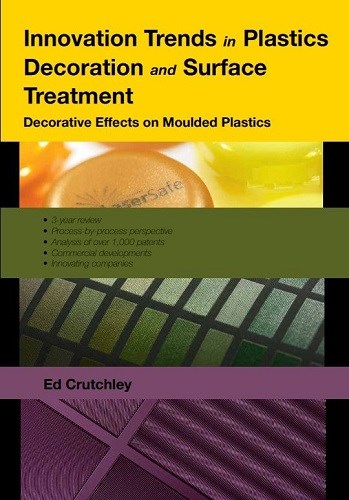Options For Plastics Decoration and Surface Treatment
New book analyzes recent trends in decoration and surface treatment of thermoplastics.
Whether you are making plastic parts or products for automotive, consumer electronics or packaging, you are quite aware of how molded thermoplastics are increasingly achieving new heights in decorative appearance and quality.
Many striking aesthetic effects are now possible by employing new polymer blends coupled with a diverse range of decoration and surface treatment technologies. They can product 3D and tactile finishes, high-definition images, flawless high gloss and metallic surfaces, as well as effects ranging from imitation materials, interferential colors, color gradients, color change and travel, gloss and matte combinations, and even acoustic or olfactory effects.
Manufacturing processes to achieve these effects include several types of in-mold film, coating or decorating technique, relatively recent technologies to improve surface quality, as well as traditional separate decorating or coating processes such as dry offset, flexographic; inkjet; pad and screen printing; foil transfer; labelling; laser marking; plating; spray coating; and vacuum deposition. The new publication, “Innovation Trends in Plastics Decoration and Surface Treatment”, from UK’sanalyzes and compares recent trends in each of over 20 types of mainstream manufacturing processes and 10 classes of sensory effects they can produce.
According to author and consultant Ed Crutchley the book covers well over 1000 different innovations. Raw materials covered include: color or reflectivity change materials and additives; effect and other special color materials; films, foils and labels; inks, paints, coatings; and substrate polymer resins, blends and additives. In-mold processes addressed include: coloration, co-injection, multilayer molding, multiple material molding; in-mold coating, on-mold painting; in-mold film techniques; in-mold printing, marking, or use of engraved cavities; and, in-mold surface improvement.

The sixteen stand-alone or in-line processes discussed range from atmospheric plasma deposition or thermal spray and foil transfer processes to laser and irradiative marking and liquid coating techniques and pigment orientation techniques to sublimation printing and vacuum deposition. The $140 book can be ordered at
Related Content
-
Paperless ‘Smart Factory’ Based on Automated Production Monitoring
Tier 1 automotive molder’s home-built production-monitoring and ERP systems, designed for “the little guy,” boost its efficiency rating and profits.
-
Impacts of Auto’s Switch to Sustainability
Of all the trends you can see at NPE2024, this one is BIG. Not only is the auto industry transitioning to electrification but there are concerted efforts to modify the materials used, especially polymers, for interior applications.
-
Medical Tubing: Use Simulation to Troubleshoot, Optimize Processing & Dies
Extrusion simulations can be useful in anticipating issues and running “what-if” scenarios to size extruders and design dies for extrusion projects. It should be used at early stages of any project to avoid trial and error and remaking tooling.







